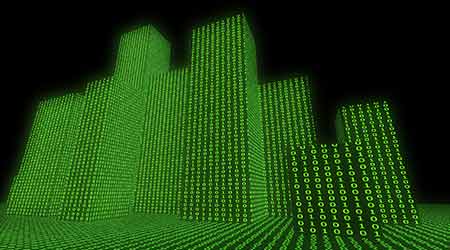Remote Monitoring Centers Aim to Turn Building Performance Data into Action
As volume of data grows, so does need for expertise to take advantage of it.
OTHER PARTS OF THIS ARTICLEPt. 1: This Page
The volume of real-time building performance data that can help facility managers improve operations has grown exponentially. But taking advantage of that data can be a challenge. One solution is creating or contracting with a remote monitoring center to provide experienced facility engineers to watch over a building, so that any issues are identified and problems corrected before they adversely impact building operations or their occupants. Sophisticated analytics demands that level of attention, even though staffing and training an in-house facilities team to accommodate that need may be too costly to achieve.
“The value of remote monitoring centers is simply the economies of scale,” explains Andy McMillan, president of BACnet International. “Many organizations cannot afford to staff experienced engineers to monitor their properties continually. So they buy time from a remote monitoring center service provider. When the costs of sophisticated analytics are spread across 50 buildings, for example, the cost for this monitoring is significantly less.”
The same basic principle applies to economics within the center itself. “Remote monitoring centers can afford to develop algorithms and spread them across their building portfolio,” notes McMilllan.
Some remote monitoring centers have been set up by building owners, while others are offered by vendors. Often a team of building monitoring management professionals can monitor a range of systems, including security, fire, HVAC, building automation, lighting, electrical, etc.
McMillan stresses that monitoring is just part of what they do. “Through the remote monitoring centers connections, they can put feet on the ground should a problem occur,” he explains. The centers often have arrangements with local tradespeople to handle nearly everything from energy management to glass breakage.
Often, remote monitoring can be customized so that customer-specific protocols are followed to respond to critical alarms or other conditions. Remote troubleshooting and diagnostics also may be offered.
“Some FMs use [remote monitoring centers] purely for monitoring, analytics, and anomalies,” explains McMillan. “Others use their feedback to improve operations.”
One advantage of expert eyes on operations at a range of facilities is shared data, which can identify common problems and use that information to prevent trouble.
According to McMillan, remote monitoring today requires two different kinds of engineering expertise. “Building engineers understand the relevance of lighting, HVAC, and security models,” McMillan explains. “But they also need engineers with software expertise so that they can create their own analytics in a fairly automated fashion.”
Effective remote monitoring uses both, says McMillan. The building engineer can then take an observed anomaly and ask the software developer to consider creating an algorithm. Their combined expertise then is pooled to make buildings work better.
Rita Tatum, a contributing editor for Building Operating Management, has more than 30 years of experience covering facility design and technology.
Related Topics:









